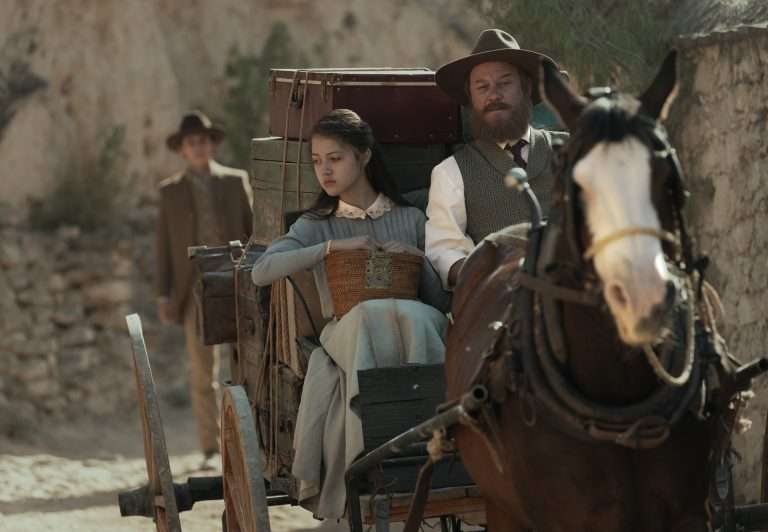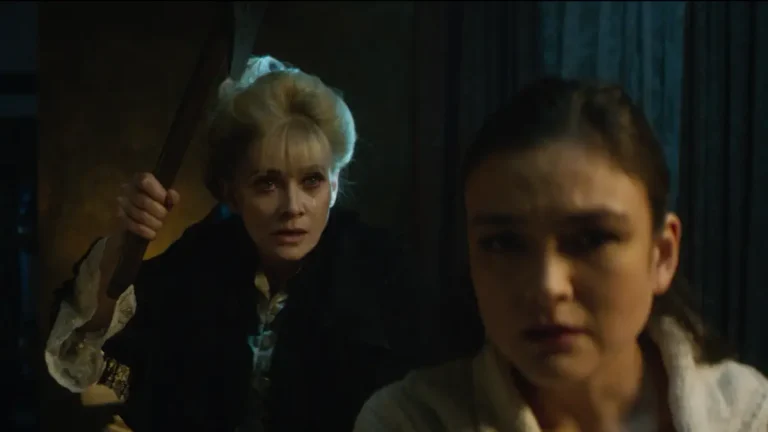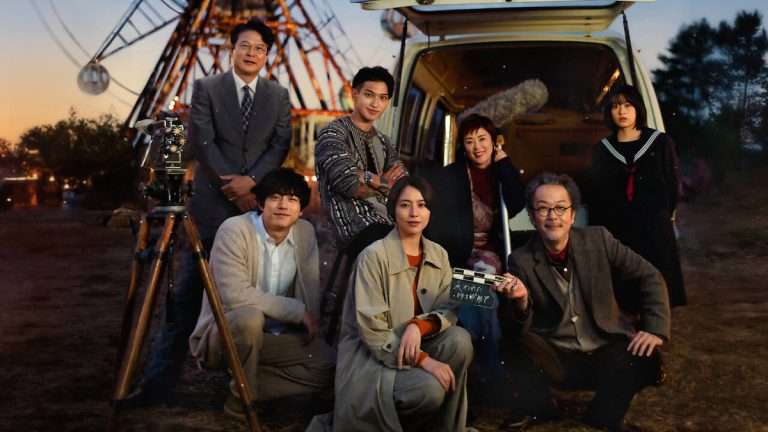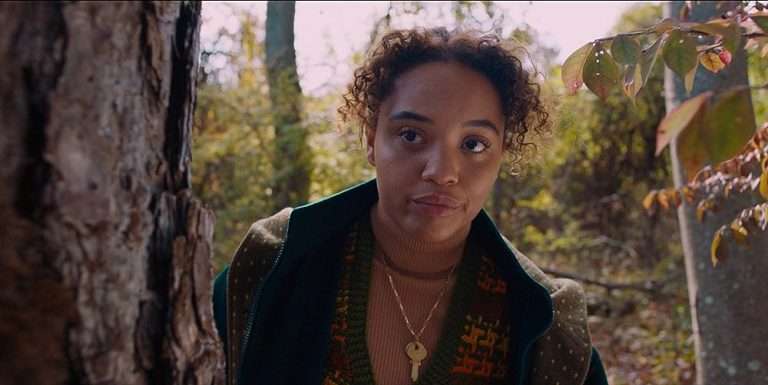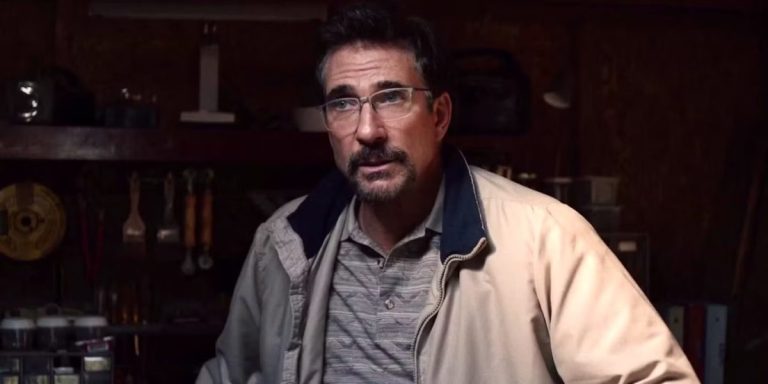Ela Thier’s Tomorrow Ever After is far from a conventional time-travel tale preoccupied with paradoxes or gadgets. Instead, it unfolds as a tender, humane fable about kindness persisting in a world jaded by cynicism. At its heart is Shaina (played by Thier herself), a historian from the 26th century who unexpectedly finds herself in New York City, circa 2015.
To Shaina, this era is nothing less than The Great Despair—an age steeped in greed, isolation, and exploitation. Yet rather than collapsing into disillusionment, she greets the dystopia with radical optimism. Convinced that decency is hard-wired into human nature, she continues to seek out the good in people, even as disappointment greets her at every turn.
Spoilers Ahead
Tomorrow Ever After (2016) Plot Summary and Movie Synopsis:
Who is Shaina, Really?
Shaina is not a seasoned time traveler, nor is she a hero trying to save the world. She is a historian, and her research dictates a personal view of the past. In her current century, cooperation and generosity are as instinctual as breathing, so she imagines the same disposition in 2015. With only a malfunctioning device in hand, she is aware that keeping her time history will take cooperation. But she needs help to avoid getting lost or being abandoned completely.
Her frame of reference is immediately at odds with the cruelty of contemporary New York. People ignore her questions for help, and others dismiss her as eccentric. Some see a defenseless person and attempt to take advantage of her vulnerability. Yet Shaina never meets this cynicism with cynicism herself. She always responds to cruelty with earnestness, a quality that makes her both innocent and quietly radical.
How Does Milton Enter Shaina’s Life?
Shaina’s optimism finally collides with danger when she is mugged by Milton (Nabil Vinas), a small-time hustler whose survival instincts are wired to distrust everyone. At gunpoint, he forces her to withdraw cash from an ATM. But when her implant hacks the system and produces unlimited money, Milton is stunned. Instead of fleeing with the cash, Shaina tackles him and insists that he stay with her. This moment flips the expected dynamic: the victim becomes the anchor, and the criminal becomes reluctantly tethered to her. Milton, thinking he can use Shaina’s strange device for more money, agrees to tag along.
What Role Do Milton and His Friends Play in Shaina’s Journey?
Milton, his girlfriend, and his friend show ‘The Great Despair’ more fully than any textbook could represent. They are defensive, cynical, and damaged by a society that celebrates exploiters over persons of compassion. At first, they perceive Shaina only as an eccentricity, where they can either just as easily take advantage of or trivialize.
Now, Shaina’s unwavering belief in human goodness softens them. She doesn’t rebuke them for being who they are; instead, she remains inquisitive. Her trust in Milton, even after the assault, marks the first crack of change. Where Milton expects deceit, Shaina offers partnership. Where his girlfriend expects self-centeredness, Shaina gives an example of selflessness. Gradually, her futuristic values begin to impact the choices Milton, his girlfriend, and his friend make in ever so slight, yet significant, ways.
Why Does Shaina Call 2015 ‘The Great Despair’?
From Shaina’s future perspective, 2015 is remembered as a bleak chapter in history. People are isolated, communities fractured, and greed drives nearly every interaction. Even simple kindness, such as helping a stranger, is often treated with suspicion. For Shaina, this is shocking, because in her own time, such behavior would be unthinkable. Her very presence highlights the contrast: when she asks for help, people ignore her. When she offers trust, people try to take advantage. Yet she persists, because to her, despair is not destiny, it’s a stage humanity must outgrow.
Why Does Shaina Keep Believing in People Despite Rejection?
Every setback reinforces how broken this era is. But Shaina refuses to surrender her ideals. She embodies the idea that belief in goodness is not contingent on results; it’s a choice. Even when mocked, robbed, or dismissed, she clings to the conviction that people want to be kind, if only given permission.
Crucially, Shaina’s persistence isn’t blind optimism. It’s her act of rebellion against a culture of despair. She chooses to behave as though kindness is inevitable, forcing others to see themselves through her hopeful gaze. Over time, Milton and those around him begin to soften, showing flashes of generosity that they didn’t think they were capable of.

Tomorrow Ever After (2016) Ending Explained:
Why Does Shaina Believe She Can Change ‘The Great Despair’?
Shaina’s belief that she can influence “The Great Despair” is the basis for “Tomorrow Ever After.” With most time-travel tales, we see the traveler react with fear, nostalgia, or superiority; Shaina reacts with compassion. Shaina’s optimism is not an unknowing flaw. It is a worldview learned from living in society, six centuries in the future, where cooperating and generosity are the rules of everyday life.
For Shaina, as a result of her training and her experiences, human kindness isn’t a virtue to be exhibited. It is the default. In 2015, arriving in a world where distrust and selfishness are the norms is shocking to her. However, she is equally shocked at not being complicit in being defined by the era. At first, her unwillingness to submit to the status quo may appear to be ridiculous. She encounters theft, disregard, and suspicion from strangers. One could presume each failed interaction was only reinforcing her previously learned history of this era, remembered as ‘The Great Despair’. In other words, when evil takes centre stage, the collapse is assured. Yet, Shaina does not give up hope.
Rather, she doubles down on her optimism. Every failed interaction is more evidence than proof that people exhibiting demonstrated, complex systemic oppression have left people trapped in a system that rewards cruelty. We know this through Shaina’s perspective as a historian; people evolve out of this sub-existence on a mass scale. That knowledge fuels her conviction that despair is not permanent; it is a transitional state.
Shaina presents an even more radical form of empathy. After Milton, the man who mugged her, continues to mock her, Shaina still refuses to treat him with anything less than dignity. She does not label Milton a criminal, but instead, considers that he is a human being formed by a circumstance of scarcity and mistrust.
She believes that by forcing Milton to help her despite his cynicism and insolence, she can transform him into another person. Shaina believes that through kindness, this generation of kids will be encouraged to be generous and trusting, and this will help create the latent compassion in others. In her worldview, cruelty is a behavior learned by an individual in a relationship with the world. Therefore, it can be unlearned if that individual can relate to a positive kind of human generosity.
This isn’t merely an academic belief about the world; it is also very personal. Shaina carries with her a type of future history, knowing this part of history almost destroyed itself for greed, pollution, and loneliness. For Shaina, all the kindness she expresses in 2015 is not just an exchange; it is an act of rebellion. When she extends trust to someone even after they have betrayed that trust, she is proclaiming interactively that humans can be more. It is her rebellion against the only narratives she is taught about despair. She believes these moments of kindness resonate forward in time, and the impulse toward moments can shape history for a better future that already exists.
In the end, Shaina’s belief in changing ‘The Great Despair’ stems from a combination of historical certainty and moral courage. Shaina knows the despair does not last forever, but she also knows progress does not happen by itself. People choose to pursue progress because they would rather do that than succumb to cynicism.
By trying to be kind, even when kindness seems ridiculous in the world around her, Shaina is both historian and participant. She is not only a historian who studies where history has taken humanity; she also does her part to redirect history towards hope. In this sense, her hopefulness is activism, not escapism. By insisting on seeing the best in humanity, Shaina challenges people to be the best version of themselves in accordance with her vision. Her belief in her capacity to change ‘The Great Despair’ is, in fact, her belief that humanity can and should always choose to be better one interaction at a time.

